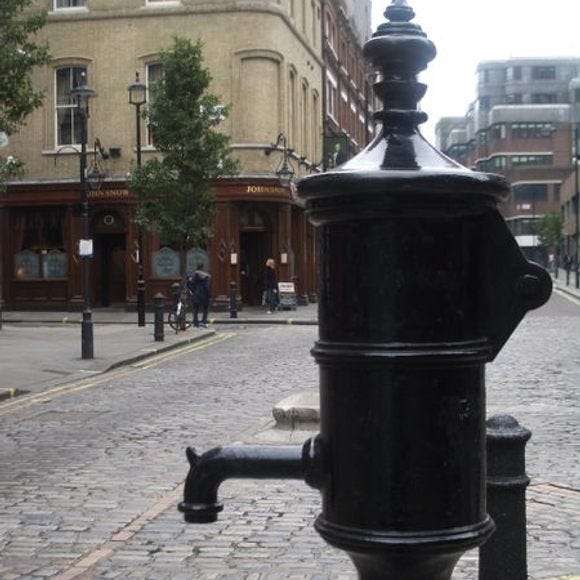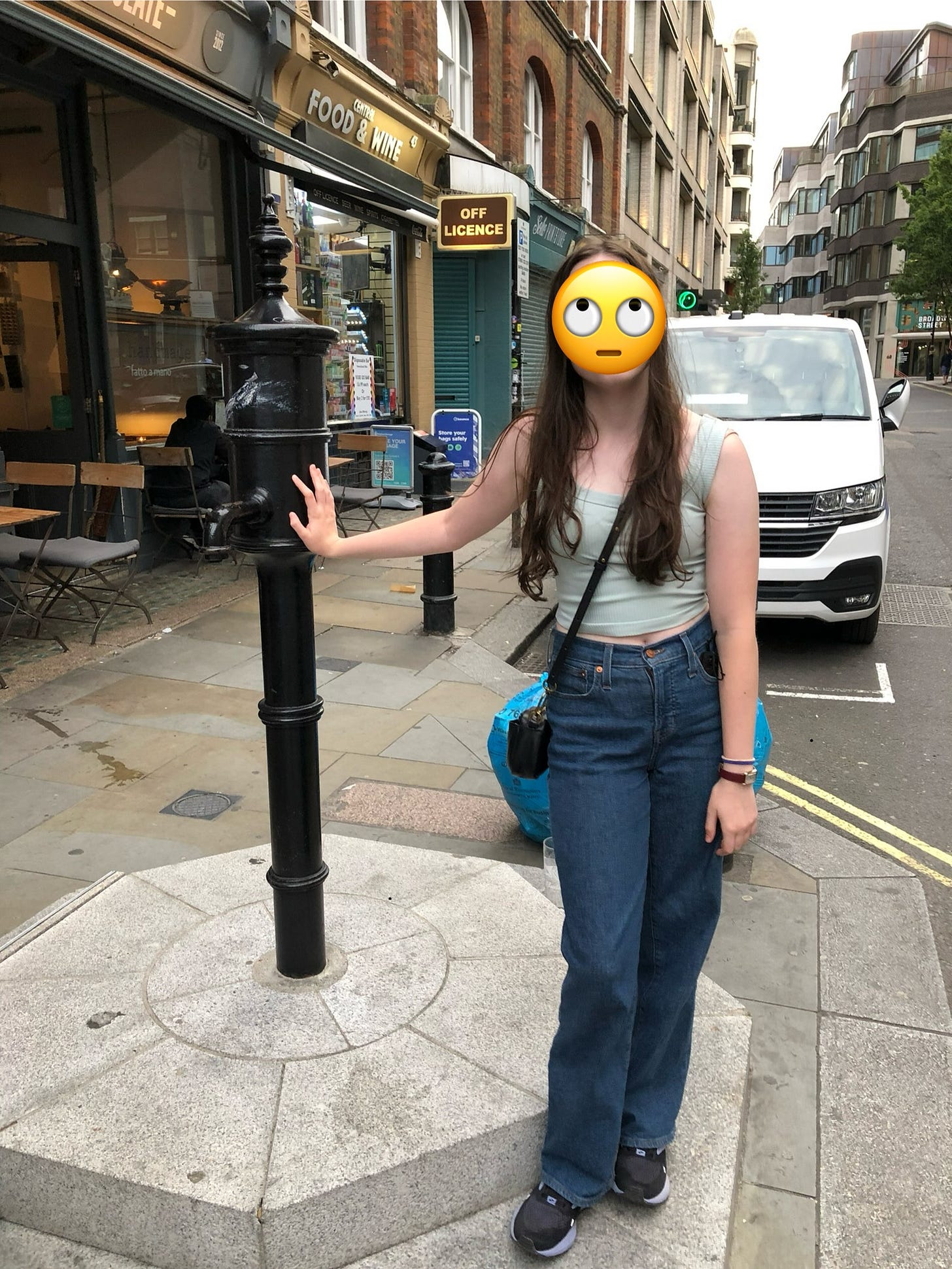Miasma!
And a video
Last month a friend texted me to ask for recommendations on what to do while on an upcoming trip to London with his teenage daughter. My answer was enthusiastic and immediate.
“Oh, the Cholera Pump!
OK, also there’s Westminster, where some fairly interesting dead people lie among the swoopy floor tiles and architecture, and then you can leave and walk across the bridge to the London Eye if you want. There’s a bathroom over there, too, which is good to know, just FYI.
Saint Paul’s Cathedral is nice with the whispering gallery, but you have to be careful, because you might hear Feed the Birds from Mary Poppins in your head for the rest of the day, and nobody wants that.
But there’s so much churchy-royal stuff. Def start with the Broad street pump. Ironically, you can get a beer at some decent restaurants around there.
Oh, and Harrods. Best Lebanese food I’ve ever had is in there.
Oh - and China Town!”
My friend is a measured man. He’s a veterinarian, and so is used to not saying what his brain is thinking when responding to people. I watched the three dots on the text bubble for quite some time until his answer finally came through.
“OK.”
“Oh, and make sure you read The Ghost Map on the flight over!”
Today on Facebook another friend who’s traveling in London fled a stuffy, packed museum due to the heat and poor ventilation.
“JFC, England.” she wrote, “Why do you hate circulating air so much?”
“Miasma,” was my reply, “Also immediately go read Ghost Map and visit the Broad Street pump!”
How do people not know this?
The mystery of how cholera was transmitted, and therefore hopefully prevented, is a fascinating one. In 1854, British doctor John Snow couldn’t see the cholera bacteria under a microscope. Italian doctor Filippo Pacini could, but he was swarthy and so we ignored him, obviously.
Anyway, Snow had his theories, laid the foundation for modern infectious disease epidemiology, and established valid excuses for alcoholism for centuries to come, all in the name of safety.
Snow thought cholera was coming from the water. Everyone else was sure it was coming from the thick, noxious air caused by open sewers and pits, rotting organic matter, decaying animals, and other such pleasures of city life at the time. This was referred to as “miasma,” and was thought to be the cause of everything from chlamydia to cholera to the plague.
Bad air, or “mal aire,” in Latin-based languages, has been blamed for just about everything, in fact. It’s where we get the word “malaria” from, letting those damned mosquitos off scott free while we slam the windows shut and practically suffocate. The bastards still get in.
The first patent for window screens was in 1868.
Maybe I should write a series on Disease Tourism. Without me, my friends might have suffered through endless churches, museums, castles and such, and missed the really cool stuff.
My vet friend did send me a picture of how thrilled his daughter was to find this sightseeing treasure. I won’t show her face, but I found a sticker that accurately conveys it.
I’m late in getting this out, so no tea this week, but here’s a quick video. Do read the book if you’re interested!





Something I really didn't know.....
If I were taking a teen to London, I would head to the Camden Locks, and the Regents Canal. I would recommend reading Ben Aaronovitch Rivers of London series for a nonstandard take on the city. Being gifted with paranormal powers is not for the week of heart.